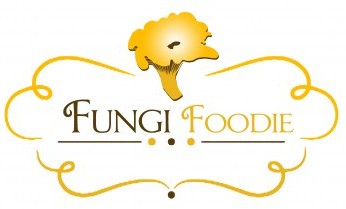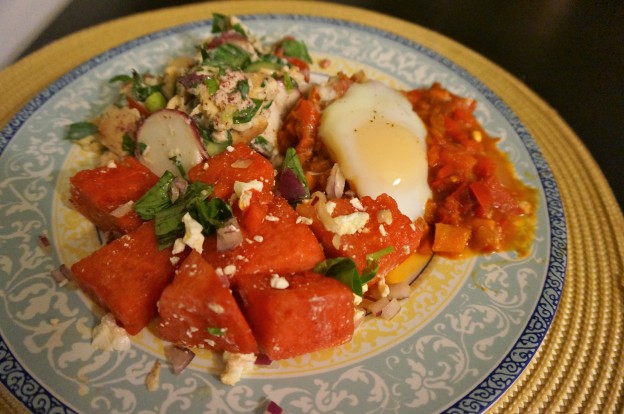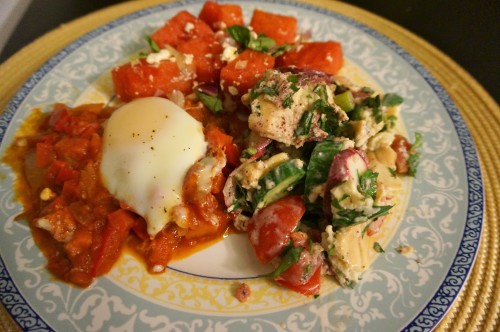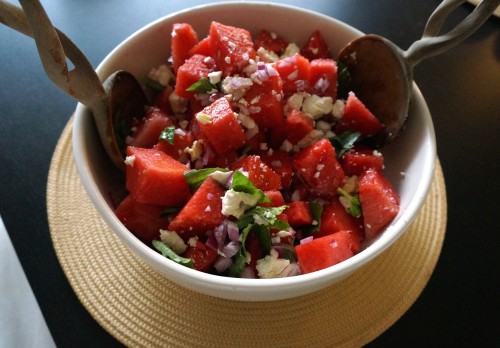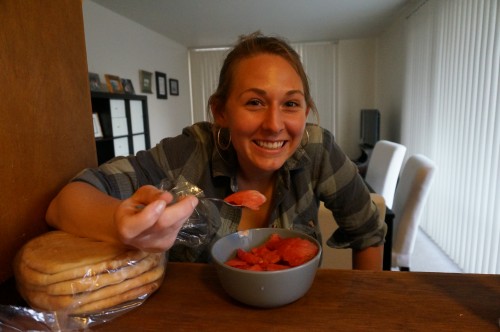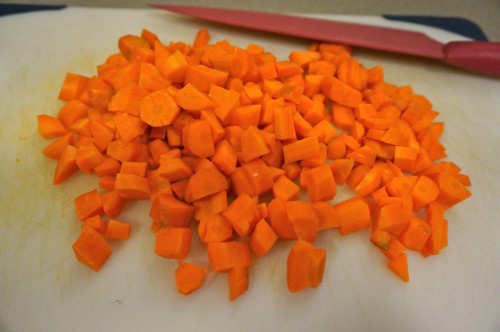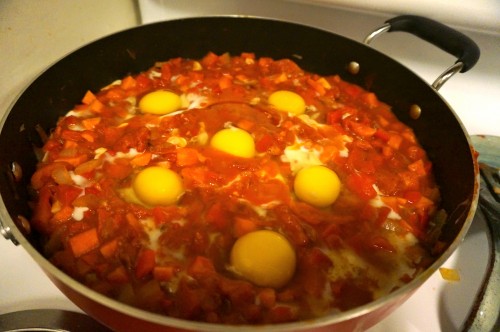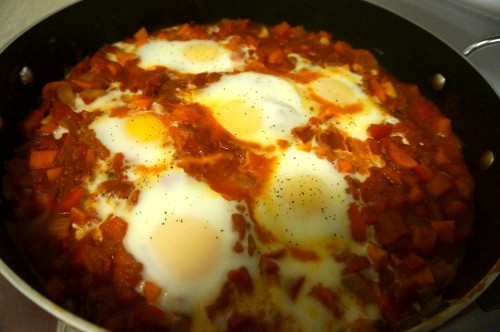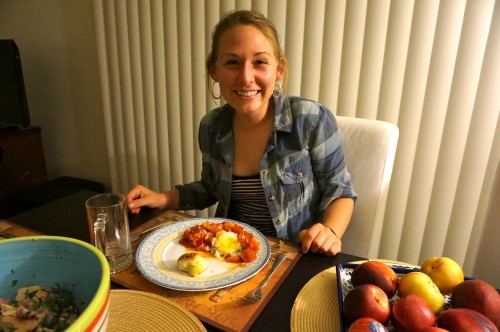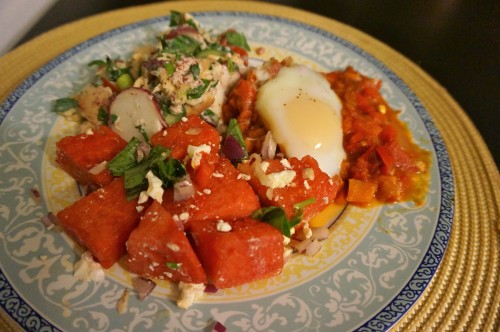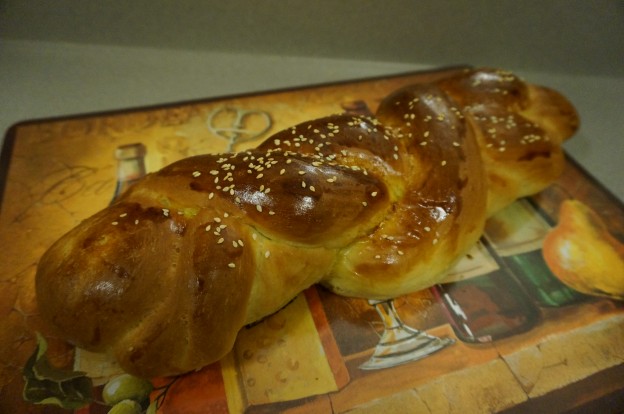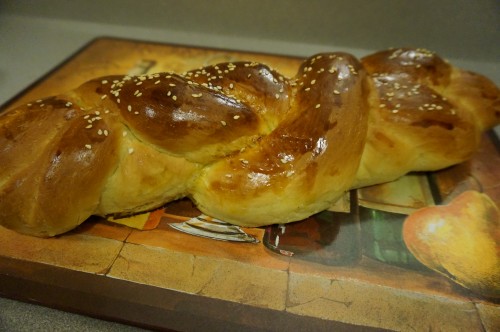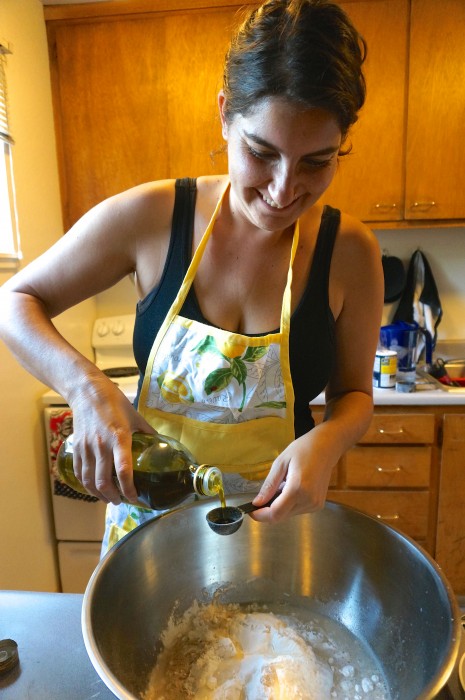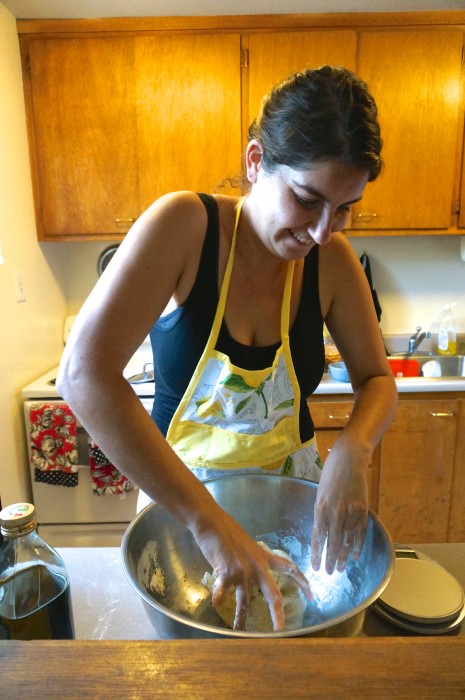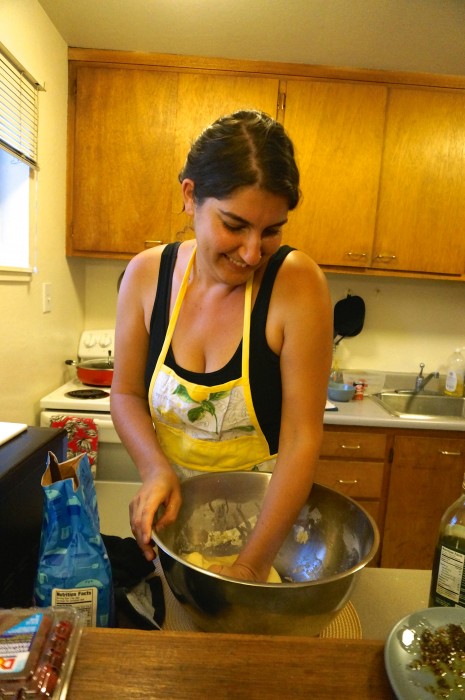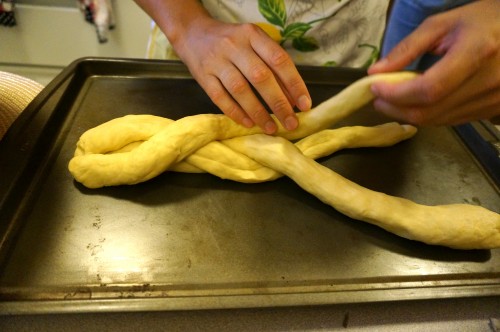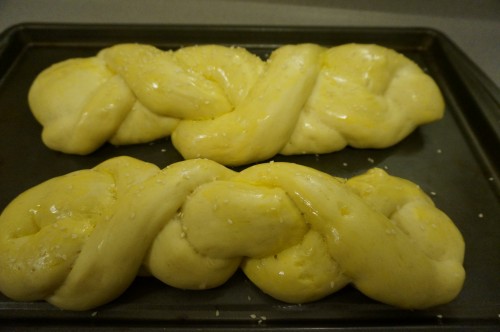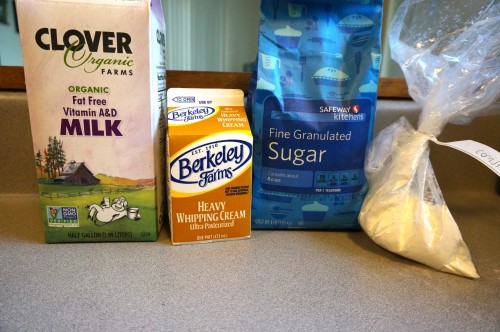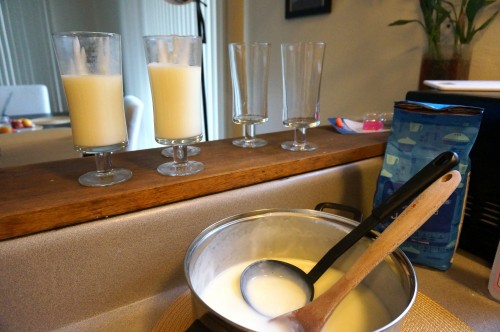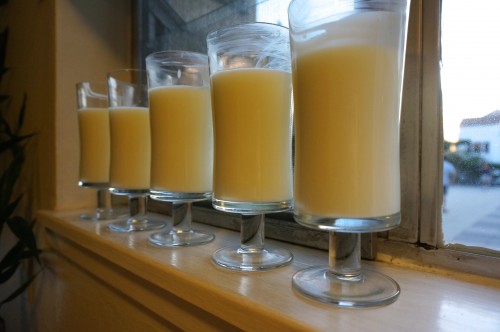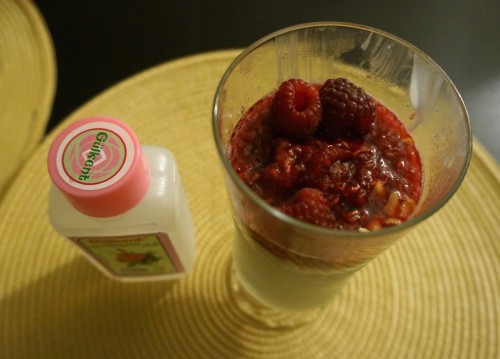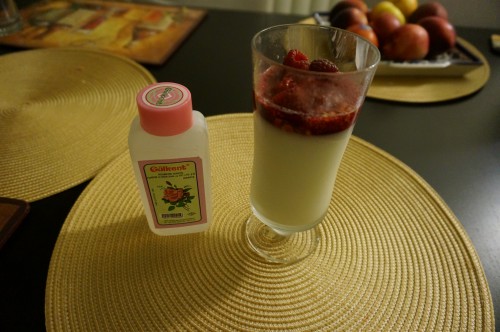As you know Thursday night I decided to go all out and make a fabulous Middle Eastern feast with Stav, the Israeli graduate student who has been visiting my lab at Berkeley. You’ve already read about the challah and the dessert that we made for the feast, but here I’m going to tell you about all the food that we made while we waited for the challah to rise and the malabi to set.
After finishing up work in the lab on Thursday I took Stav to the Berkeley Bowl to buy ingredients for our feast. This was Stav’s first trip to the Berkeley bowl, which was super exciting for me because you know how much I LOVE Berkeley Bowl. I especially love taking people there for the first time and watching them experience its greatness. If you haven’t been there yet, hit me up and I will take you there. Trust me, you will not be disappointed! It is truly the greatest grocery store that I have ever been to, and no I am not in anyway being paid to say that. Berkeley Bowl has so much amazing produce and especially this time of year with all of the wonderful stone fruit and melons in season, I am easily distracted from my shopping list. Right when we walked in I saw watermelons on sale and I had to have them. I had made this delightful watermelon and feta salad from Yotam Ottolenghi earlier this summer and felt inspired to make it again.
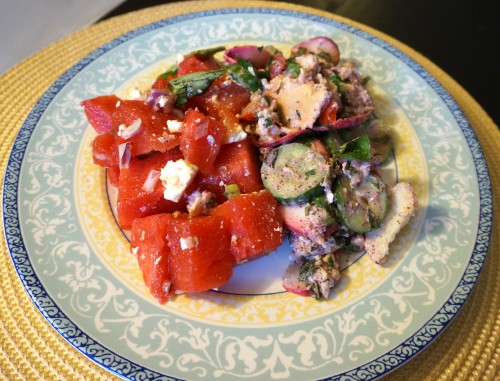
Na’ama’s fattoush and watermelon and feta salad for a perfect light and healthy meal that captures the flavors of summer super well!
If you are short on time and want to make something that is healthy, flavorful, satisfying, perfectly captures the flavors of summer, and involves no cooking whatsoever, make Ottolenghi’s fattoush and watermelon and feta salad. If you haven’t tried mixing sweet juicy watermelon with salty feta and fresh basil for this delicious savory salad, go out and make it right now while it is in season and you still have the chance. I promise you will not regret it!
The watermelon salad is so simple and easy you don’t even have to measure anything out. Just chop up a watermelon, tear up some basil, thinly slice some red onion, crumble up some feta, and add a dash of olive oil and mix it all together. I swear Ottolenghi is a flavor genius coming up with this stuff. Feta and watermelon is truly a winning combination but adding the basil and the red onion and olive oil is nothing short of magic. You may think I’m being hyperbolic here but really it is such a great fresh summery salad.
After getting side tracked with the unplanned but oh so delicious watermelon salad, I made my favorite fattoush salad from Ottolenghi’s Jerusalem which I’ve featured in a previous post. This is another dish that I just can’t get enough of. The fattoush and watermelon salad went together really well and just screamed summer. Our plates were bursting with flavorful fresh herbs, juicy tomatoes and watermelon, and delicious pita with creamy buttermilk. Everything tasted so healthy and light but incredibly satisfying.
After we made the fattoush and watermelon and feta salad, we got started on the shakshuka, which is an Israeli egg dish with a base of tomatoes and red peppers. Tom and I ate it every morning at the breakfast buffet at our hotel in Israel, but you can also eat it for lunch or dinner. I was intimidated at first to make shakshuka because it sounds so fancy and exotic, but Stav made it seem simple and said that you can pretty much throw any vegetable that you have wilting in your fridge into it. It is the Israeli version of everything but the kitchen sink! stew. Traditional shakshuka starts with a base of tomatoes and red peppers, but you can get creative with it from there. We chopped up onions and garlic sauteed them in oil until soft. We cleaned and chopped up 2 red peppers and a small red chile pepper and added those to the onions and garlic. I had some semi soft carrots in my fridge left over from my CSA basket from the week before so we chopped up those and added them in. I had a can of whole peeeled tomatoes left over from a soup I had made over the weekend, so we cut up those along with 3 fresh tomatoes and added those to the pan. We set the heat on high and let the vegetables cook for 10-15 minutes.
Once the vegetables were cooked, we added a small can of tomato paste, some cumin, paprika, and some red zhoug which is a spice mixture based on chiles and coriander and garlic that I bought in Israel. You can add any sort of spicy spice at this point- I happened to have zhoug which we added or you could add harissa or if you just have chile flakes that would work too. Let this simmer for another 5-10 minutes and add some salt and pepper. Once the sauce it cooked, make little holes with a spoon and break a whole egg in it. Then put the heat on low and cover and let cook for 10 minutes.
Shakshuka goes great with pita or challah and can also be accompanied by an Israeli cheese called labneh or plain Greek yogurt. It was spicy and savory and the eggs came out perfect. Claire, another one of my graduate student friends, who I went on this awesome trip to the redwoods with, came over to join us for our feast after spending hours washing redwood roots in the lab. The three of us were practically shrieking with delight while eating the fantastic fresh tasting fattoush and watermelon salads which went really well with the shakshuka. The challah that we had baked was delicious dipped into the shakshuka. All in all, it was a successful fun filled evening filled with delicious food and wonderful fungi loving ladies.
